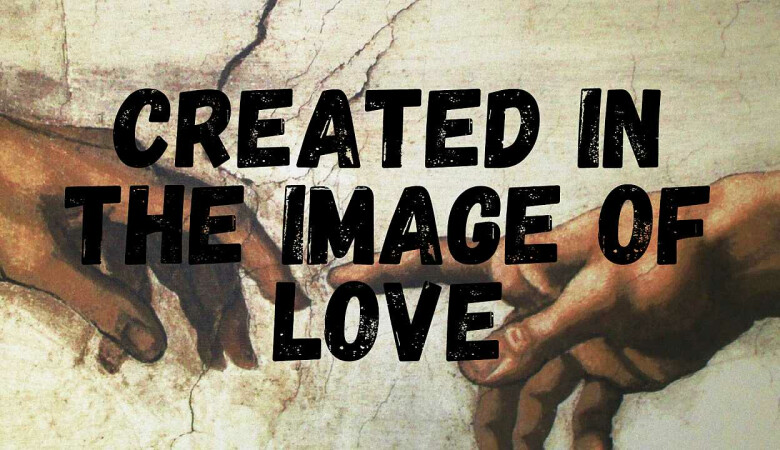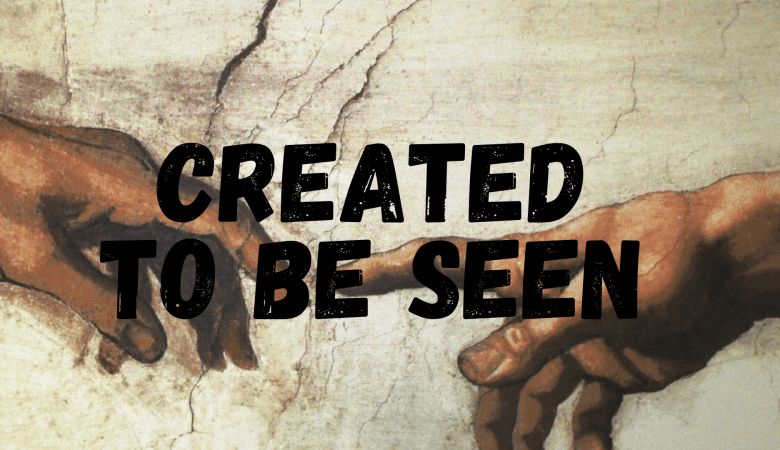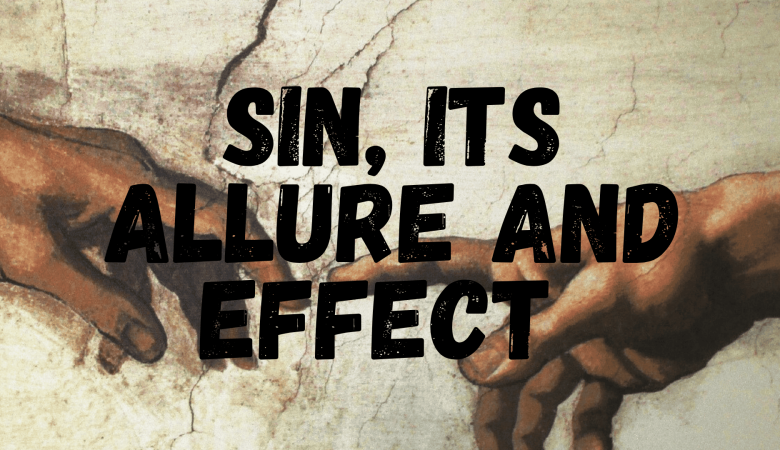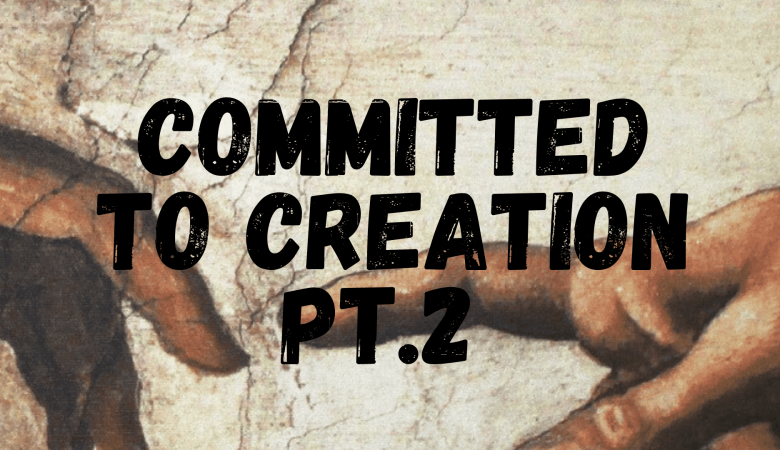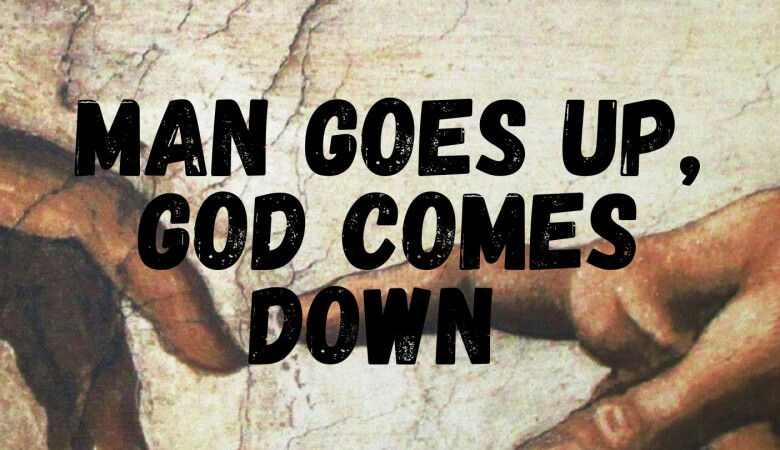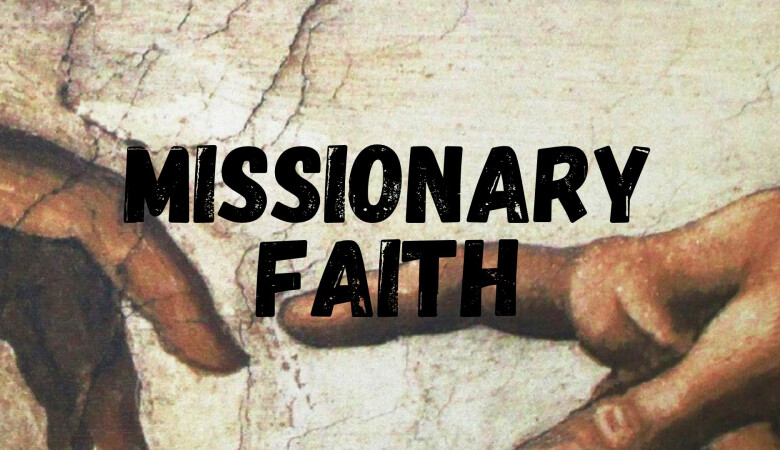Series: Created in Love
Biblical Anthropology
October 13, 2024 | Peter Rowan
Passage: Genesis 3:20-24
Summary
Right at the end of Genesis 3, after the consequences for sin and rebellion are given to the serpent, Eve and Adam, we have reiterated for us the big ideas of human existence in these origin stories. Eve is named as the mother of the living - a reaffirmation of the "be fruitful and multiply and fill the earth" of Genesis 1. But while the creation mandate has this echo post-sin entering the world, the consequences of sin continue: God has to cover them and gives of his creation to do so and they are banished from the Garden. So, human dignity and worth are put forth right next to the severity and consequences of sin. Beauty and brokenness. Sin, the flaming sword, and the cherubim and the east of Eden would have evoked for the people of God the Tabernacle and Temple that we the great invitations and hope of God's commitment to life with in the world we were made for.
Transcript
In 2018, the London-based School of Life made a tutorial on “How to get married”. The goal of this was to update marriage for a post-religious crowd. How they describe it is like this: “An outline for a new kind of wedding ceremony based on psychological theory rather than religious traditions.” The results are rather startling and profound and sort of funny.
The first part is called “The ritual of humility”. Each party in the marriage faces the other and reads from their own personal “Book of imperfections”. So, for example, they will say, “I’m not good at communicating my feeling maturely,” “I tend to assume that if your upset it’s something about me,” and things like this. A voiceover in the video tutorial tells us all, “Self-righteousness is, after all, the great enemy of love.” Which is to say, that if you are focusing on your own rightness, the other person in the relationship will always and inevitably be in the wrong, and that is not setting you up for a good marriage beach it is hard to be in a relationship where the other person is never wrong and nearly impossible to loved when you never let your guard down. And true intimacy requires vulnerability. So, let’s just let it all out on the big day! So, after this reading, the couple looks at each other in the eye and their recite together, “ Neither of us is fully sane and healthy. We are committed to treating each other as broken people, with enormous kindness and imagination - when we can manage it.” The congregation then has their part to play in this “ritual of humility”, saying, “We are all broken. We have all been idiots and will be idiots again. We are all difficult to live with. We sulk and get angry, blame others for our own mistakes, have strange obsessions, and fail to compromise. We are here to make you less lonely with your failings. We’ll never know all the details, but we understand.”
As funny as that is, my guess is that most of you find that rather refreshing. Two people, not all masked up, not all dolled up, but coming before one another stating their flaws and their idiocy. Far from just exuding despair in the other, it actually rather produces a sense of hope and togetherness.
But there is also something to the reaction that says that the wedding day is a day of aspiration and for hope and for celebrating all that is lovely in your spouse-to-be. I mean, we have all year long and all life-long to court cynicism and reveal our ugliness and our self-centeredness and our sin. Let’s allow for just one day, one evening, one hour of ceremony to bask in a fairy-tale moment. There is maybe a little something to the “say yes to the dress” mentality of desiring one day where everything seems a bit perfect.
But then there is the way of the historic Christian marriage, “for better and for worse, for richer and for poorer, in sickness and in health”. There is a holding together in those statements something that the Bible holds together and that we would do well to hold together. We are both unbelievably beautiful and tragically broken.
You know, it’s been my contention in this series in the beginning chapters of Genesis that these Origin stories (Genesis means “origin”) have ongoing relevance in our lives. That it really is wrong to read these text dismissively as simply some fanciful farce or to old to be of current use. I’ve suggested that they tell a more true story than anything else that has to do with why we are here and where we came from.
But today, before we leave chapter 3 I want us to see how this is the case in relation to who we are as people and to encourage you to hold together the tension of your own beauty and brokenness and the beauty and brokenness of every single person you ever come into contact with. What we see in these short verses after God’s words to the serpent and to Eve and to Adam after their rebellion is a reaffirmation of humanity and also the devastation of sin.
First, I want you to see that God’s words to Adam and Eve in Genesis 1 remain in a very real way with them after their sin.
Verse 20 tells us this: The man called his wife’s name Eve, because she was the mother of all living.
One commentator suggests that this detail is an act of faith and a belief in the promised seed that would come from the woman. No doubt that is true.
I would also suggest that it is a declaration the image of God is still who they are and as that image they are still to go out and be fruitful and to multiply and to fill the earth as they were commanded to do in Genesis 1:28.
I said a couple weeks ago that the kings of the ancient near east would have statues of themselves placed throughout their kingdom and coins with their faces on them to declare who is in charge and in making us in his Image and telling us to go out into the world God was saying that we bear the image of the true King who rules over all the earth.
What I am saying to you now is that simply in the name Eve there is a reaffirmation of the dignity and the beauty of each person. God did not take back his command to go out into the world and bear his image because sin entered the world! Human life is still full of dignity, full of beauty and full goodness.
There is no one who does not still, even after the fall, bear the image of God. This is why Jesus can command us “You have heard that it was said, ‘You shall love your neighbor and hate your enemy.’ 44 But I say to you, Love your enemies and pray for those who persecute you, 45 so that you may be sons of your Father who is in heaven. For he makes his sun rise on the evil and on the good, and sends rain on the just and on the unjust.” (Matthew 5:43-45)
Even after the fall into sin there is still great beauty in each image bearer of God.
But the second thing I want you to see is absolute damaging effects of sin. The brokenness of the image is a real brokenness.
I mentioned before how God killed part of his creation, a living part of it, to make the garments for Adam and Eve. Verse 21 just tells us that “The Lord God made of Adam and for his wife garments of skins and clothed them.” This was a loving act, but it also was sacrifice. Something had to die to cover their shame that who they are does need mending, does need covering.
So while I want you to see that while Adam and Eve’s image bearing and the work of that image bearing is affirmed, sin has begun to mar God’s good creation. And ultimately what God says is that in our sinful state we can’t have the everlasting intimacy with him that we were made for.
22 Then the Lord God said, “Behold, the man has become like one of us in knowing good and evil. Now, lest he reach out his hand and take also of the tree of life and eat, and live forever—” 23 therefore the Lord God sent him out from the garden of Eden to work the ground from which he was taken. 24 He drove out the man, and at the east of the garden of Eden he placed the cherubim and a flaming sword that turned every way to guard the way to the tree of life.
What God is saying here is that while Adam was meant to live forever with God and in creation perfection and intimacy with God and others, part of the effect of sin is that that cannot happen! The tree of life, the promise of life eternal in perfect harmony with God and others cannot happen.
We are beautiful and we are broken. We are image bearers and we rebellious sinners. And those two things have to be held together. You need to hold them together for yourself.
Think about it. You are full of dignity and worth. And we each need to hear that. You are. When someone has bullied you at school, they have wronged you and you do not deserve that. When your spouse hit you, you do not deserve that kind of treatment. When someone else used you so that they could get ahead at work and left you behind, that was wrong. When a friend is a friend just when it is convenient for them and then you are discarded, that is wrong. When a parent uses a child just to show off, or when a parent yells and cusses out the child in the grocery store line because the parent is so embarrassed by their child’s behavior, that is wrong.
You were made in the image of God and you have dignity and worth. And every action and every word that cuts at that dignity and worth is an act of violence against the good work of God’s creation.
But we also need to know that we are broken and we do the breaking. You are part of the problem in the world and it has detrimental effects. It does you no good in life to go through acting like you got it all together. No good. Self-righteousness really is a great enemy of love. One of the worst things you can do for your marriages or for you relationship with your siblings or with your friends is to never admit that you are part of the problem in the world. “The ritual of humility” has a lot going for it.
Brothers and sisters, let me say this to you, I know that voting is very important and that the officials that we elect really do have bearing in our world. I would encourage you to take that responsibility seriously. But in a very real way, as your pastor, I am less concerned about who you vote for then the kind of people you are, how you treat one another and you treat those who you consider your “enemies”. I am most concerned about the relationships that you break and the witness that you fail to bear to the God who made others in his image and who came and died for his enemies.
What I am suggesting to you this morning is that these chapters in Genesis have massive bearing in our lives and the bearing that they have is reaffirmed for us here at the end of chapter 3.
Melise and I have been reading David Brook’s book The Road to Character and in it he refers to Rabbi Joseph Soloveitchik’s book Lonely Man of Faith where Soloveitchik’s proposes that the two accounts of the creation of Adam in Genesis 1 and then Genesis 2 give us two different ways of humankind. Adam 1 is to build and create and produce and discover. But that often just leads to the desire for high status and winning victories, for conquering the world. Adam 2, born of the dust as he is and in need of a helper, is one who wants to love intimately, desires to live in obedience to transcendent truth, to have a cohesive inner soul. Adam 1 lives by utilitarian logic, output, utility. Adam 2 lives by moral logic, you have to give to receive, you have to surrender to that outside of yourself to gain strength. Individual success leads to failure, but failure leads to the greatest success or humanity and learning. Brooks book is largely about learning the movement between Adam 1 and 2 and learning the gift of an Adam 2 life. Much of that movement only happens in the passage of time and experience.
There is a real benefit to contemplating those kinds of things, but it seems to me that - and we will see this more in Genesis - that the real tension is not an Adam 1 and Adam 2, but a humanity that bears the image of God and is broken and breaks others because of their sin.
You are a statue to the reality of who God is, but you are statue that is cracked all over and your words and your actions in the world often wreck havoc on the other statues of God. This is the road to character. Dignity and humility held together. Dignity because Eve remains the mother of all living even in her sinful state. But humility and contrition because our sin has had real and devastating effects in the world. We are now barred from what we were made for. We do not experience life as it is meant to be.
But I want to end with showing you that even the images that we have here in these few verses would have drawn the Isrealites of old attention to the hope of God’s grace.
People have asked and I think very rightly, “what’s the deal with east and the cherubim and the flaming sword guarding the way to the tree of life.
Well, keep in mind that Israel likely would have received Genesis along with Exodus and Leviticus and probably soon after Numbers and Deuteronomy. They were of Moses. And so the directions of how to build the tabernacle and the temple in Exodus would have been on their minds and the sacrifices of Leviticus would have been on their minds. And just as the garden functioned as a meeting place between God and man, so also the tabernacle functioned that way and the temple functioned that way. Listen. The Lord walked in the garden. He is also said to do so in the tabernacle in Lev 26, Deut 23 and 2 Sam 7. Eden’s entrance was in the east and it was guarded by cherubim. So was the entrance to the tabernacle and the temple says Exod 25. The Menorah (the lamp stand) that was in the tabernacle and later the temple was in the form of a tree depicting the tree of life. The words that are given to Adam for the garden when he is told “to work it and take of it” in Genesis 2:15 are the same words often used of the priests and their duties in the tabernacle and temple. The gold and onyx mention in Gen 2 are often mentioned are materials extensively used in the tabernacle and temple.
What I’m saying in this is that while you were made with such dignity and worth, made in the very image of God and while your sin and you rebellion against God haas such real effects in the world that should humble us, what God has always been about doing is people his people back to himself. And what that demanded was a dying. The flaming sword is evocative of the sacrifices made at the tabernacle and temple that were cut up and burned on the alter. Sin demanded death because sin brought death. But in all of this we see the hope of Jesus. John says “And the Word became flesh and dwelt among us”. And Revelations says that the New Jerusalems streets will be gold and their will be a river there and their will be the tree whose leaves are for the healing of the nations. And the lamb will be there seated on the throne. The lamb who is Jesus the One who’s life brings us back to the place where we were made for.
Friends, in these few verses we have for us a declaration of our image bearing work, we have an invitation to humility and confession on how destructive our sin is in this world, but we also have hope, hope for what God’s grace, hope that would come fully in Jesus.
Series Information
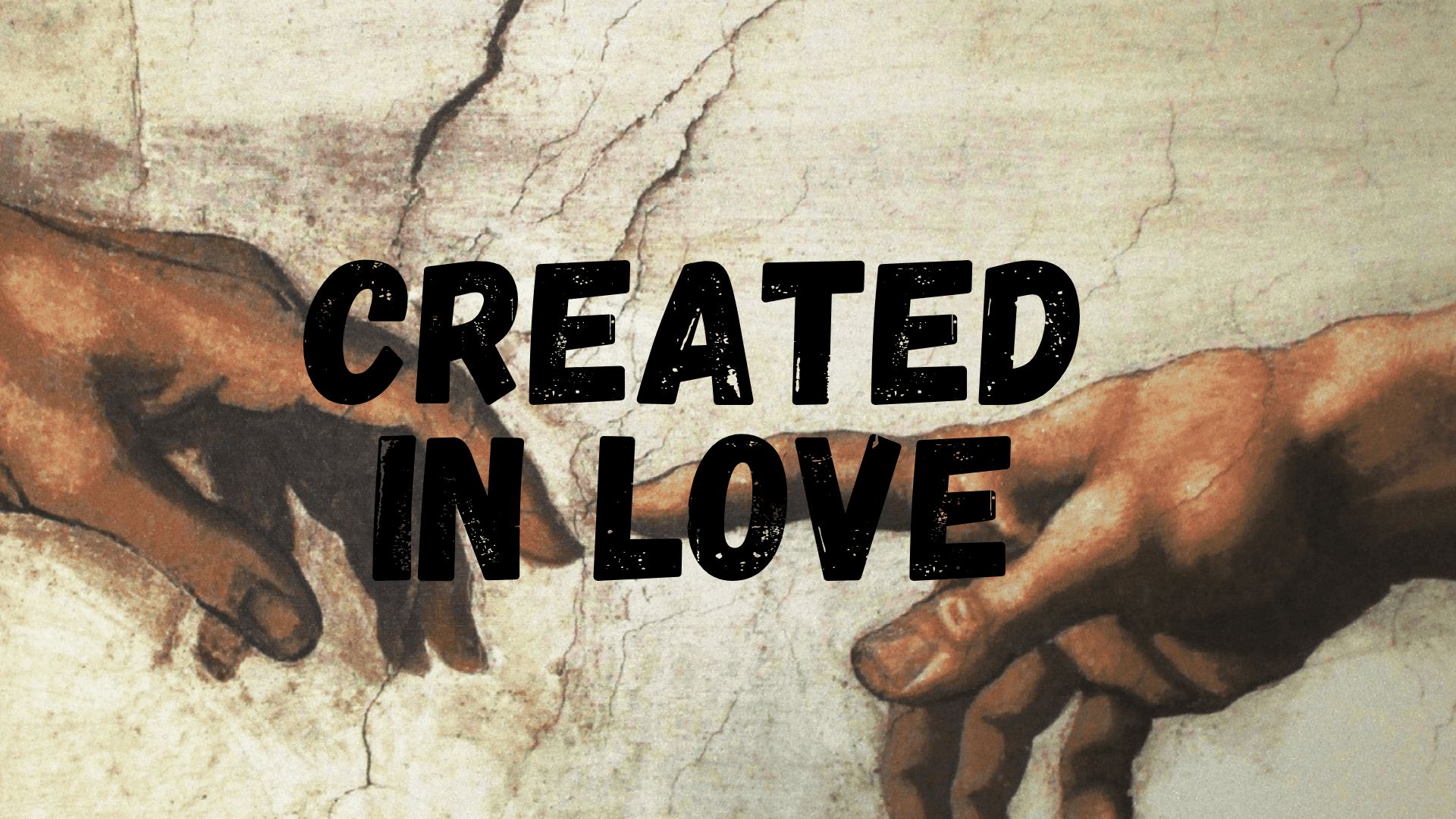
The first 11 chapters of Genesis are the origin story of all that is. In it we find unexpected account. It is not written to satisfy our desire to know the “how” As we will see, these 11 chapters are far more concerned to tell us “who” creates, and what becomes of the “good" world he hands his image bearers.


